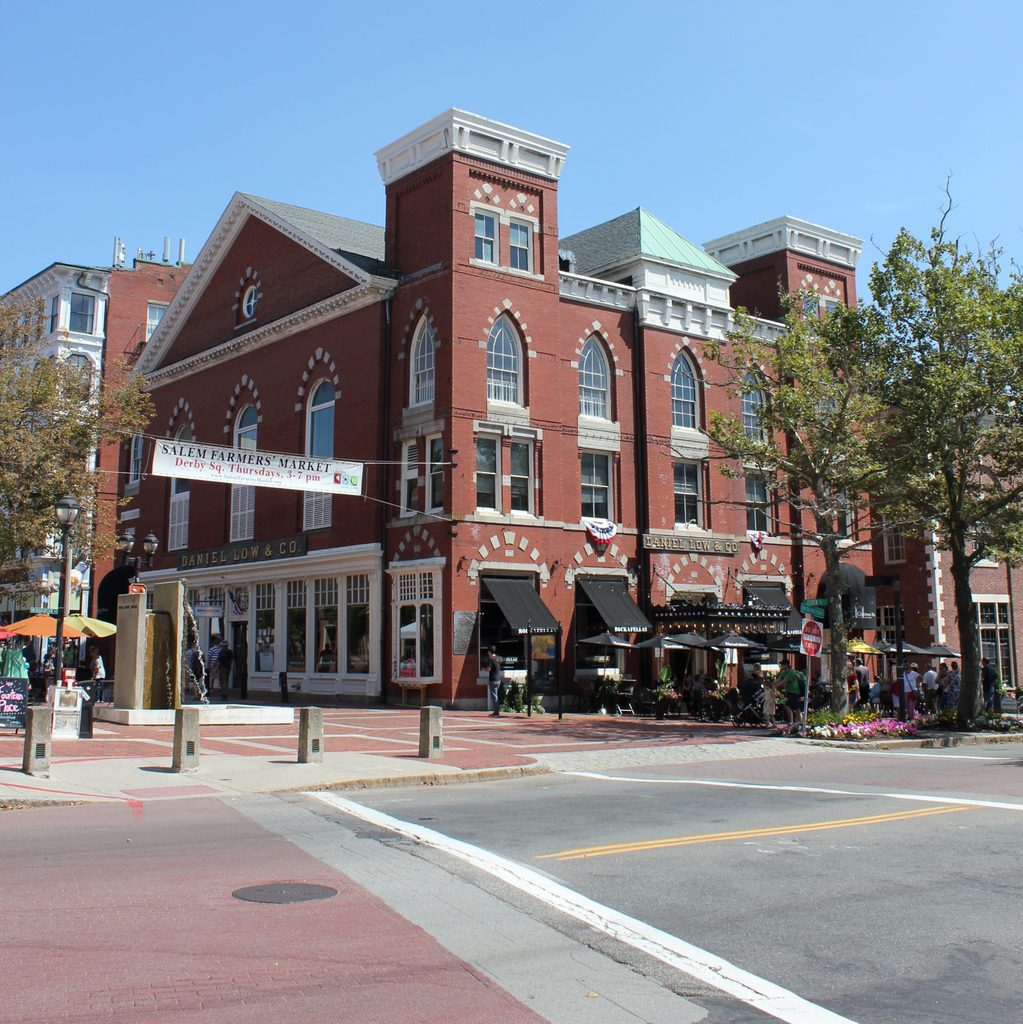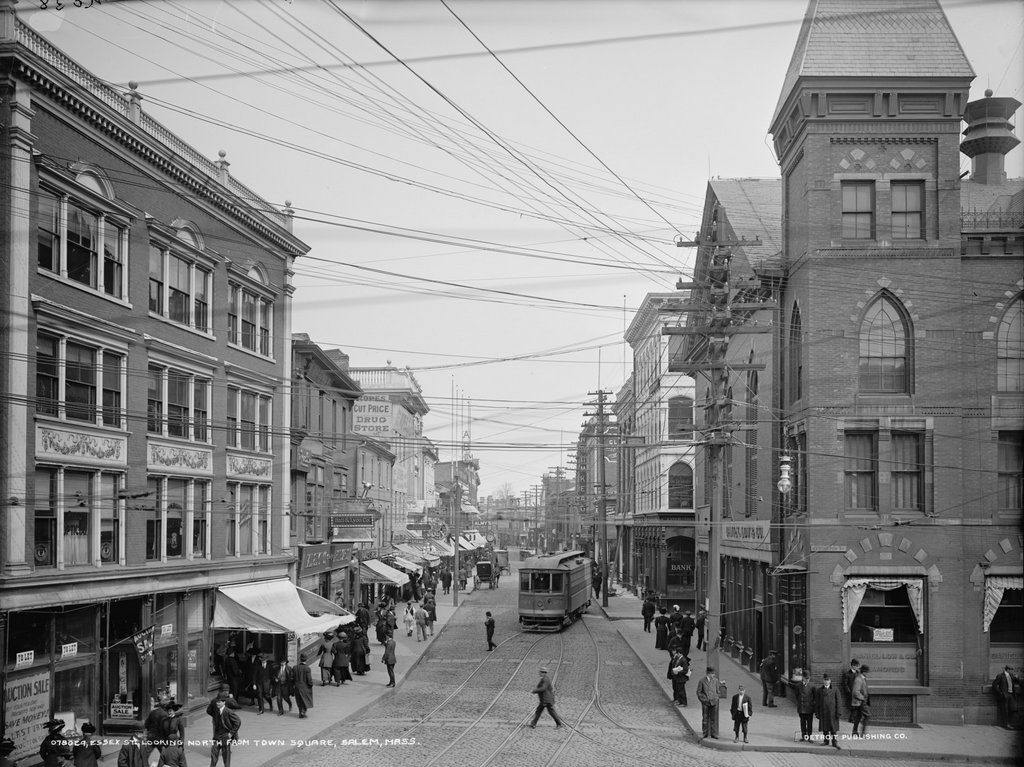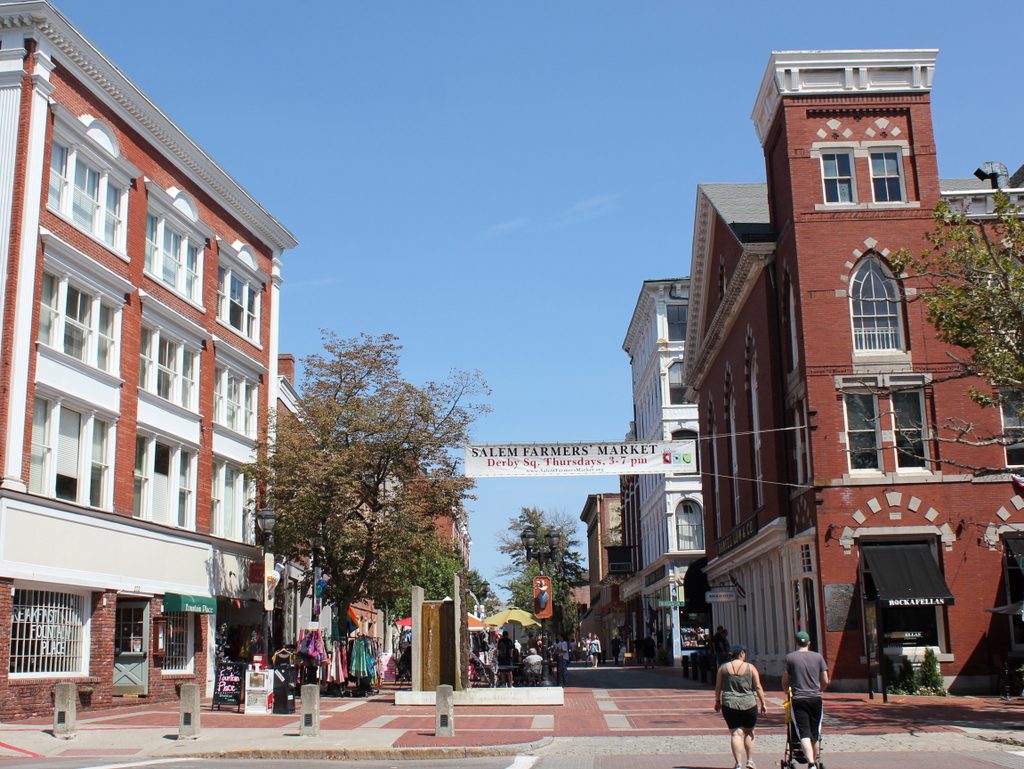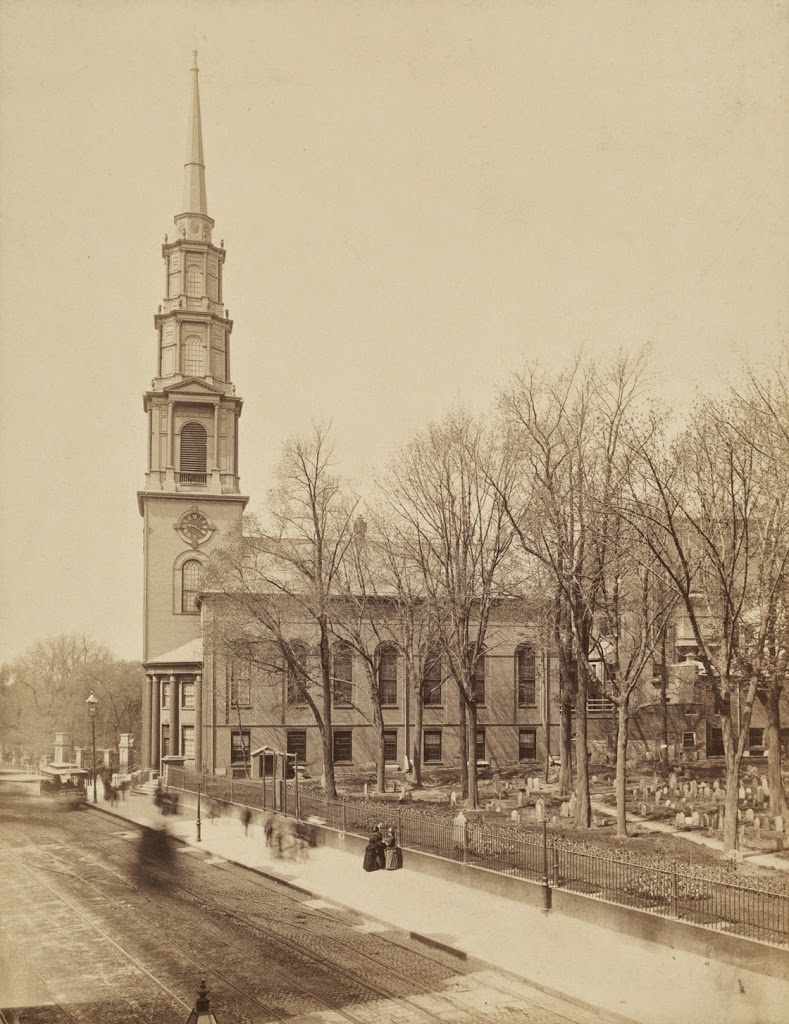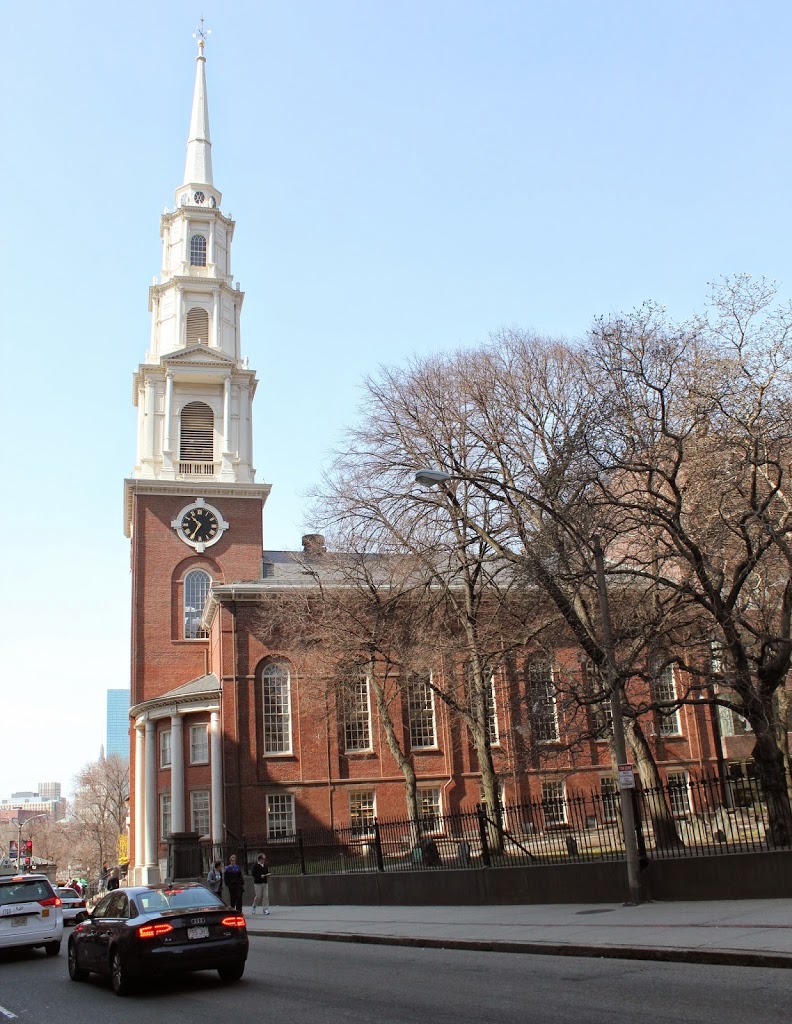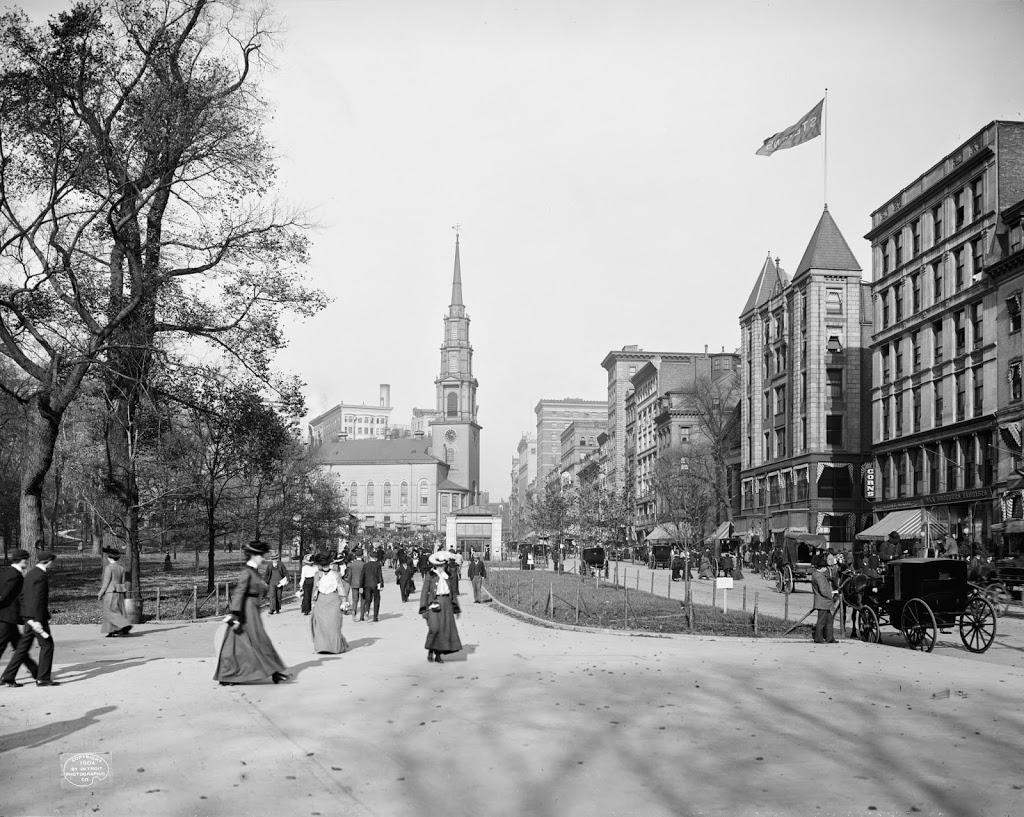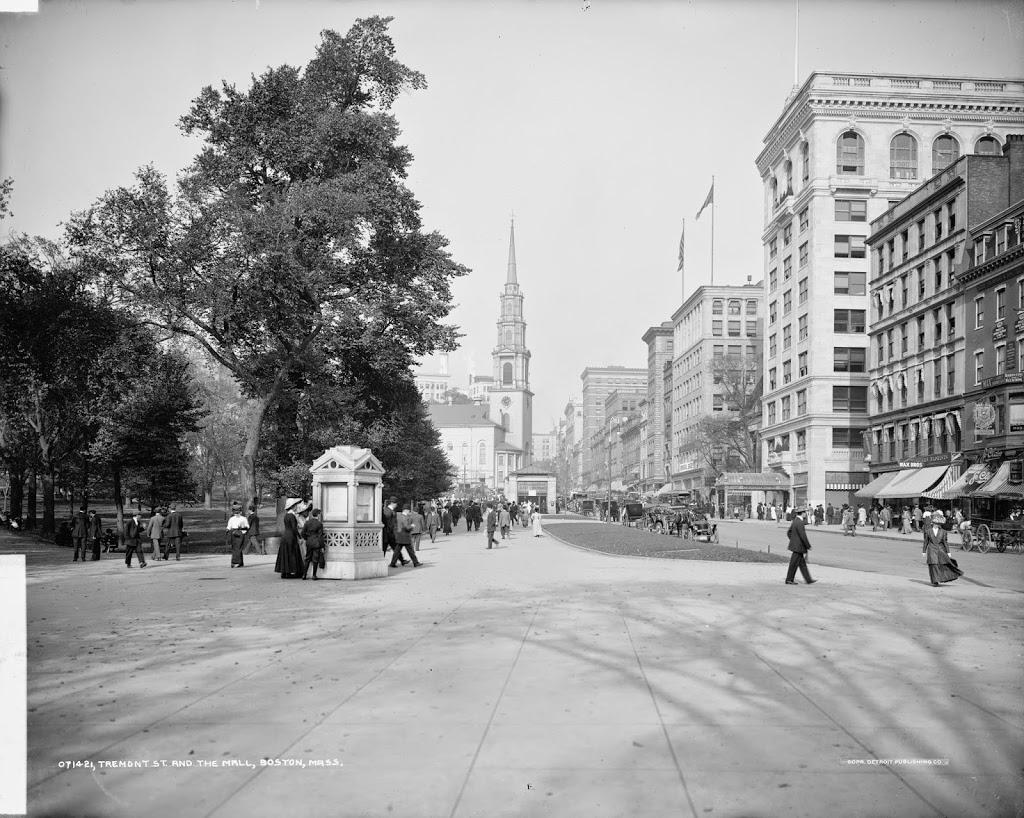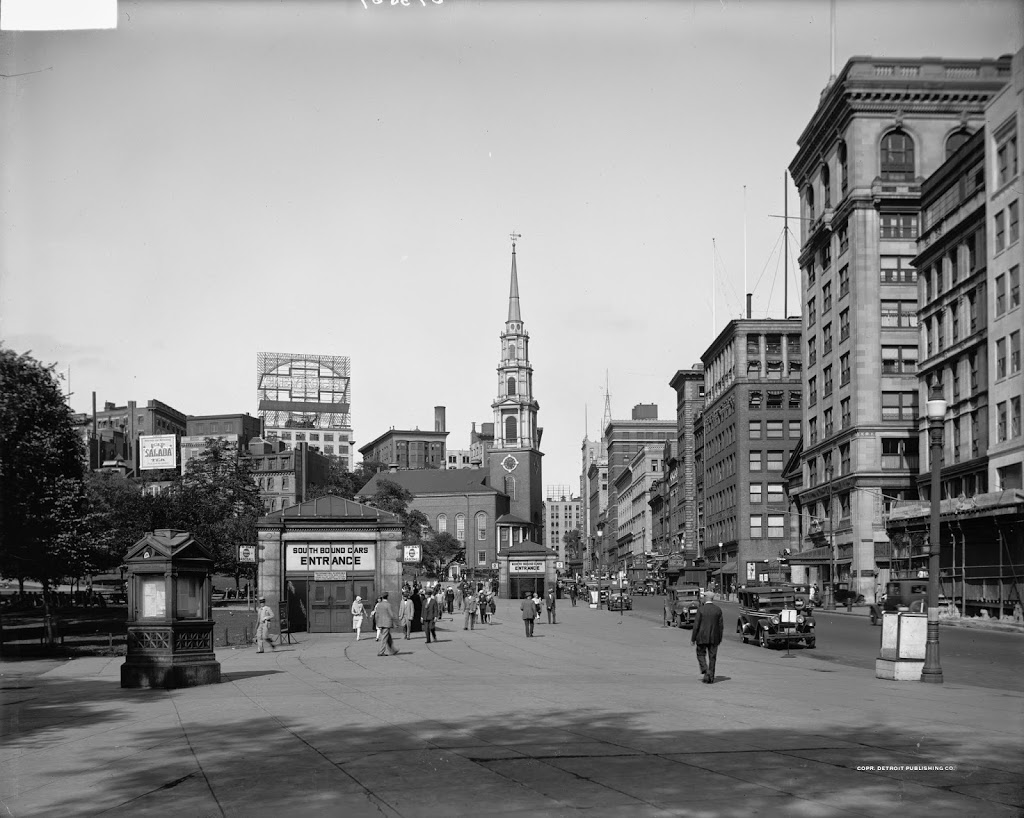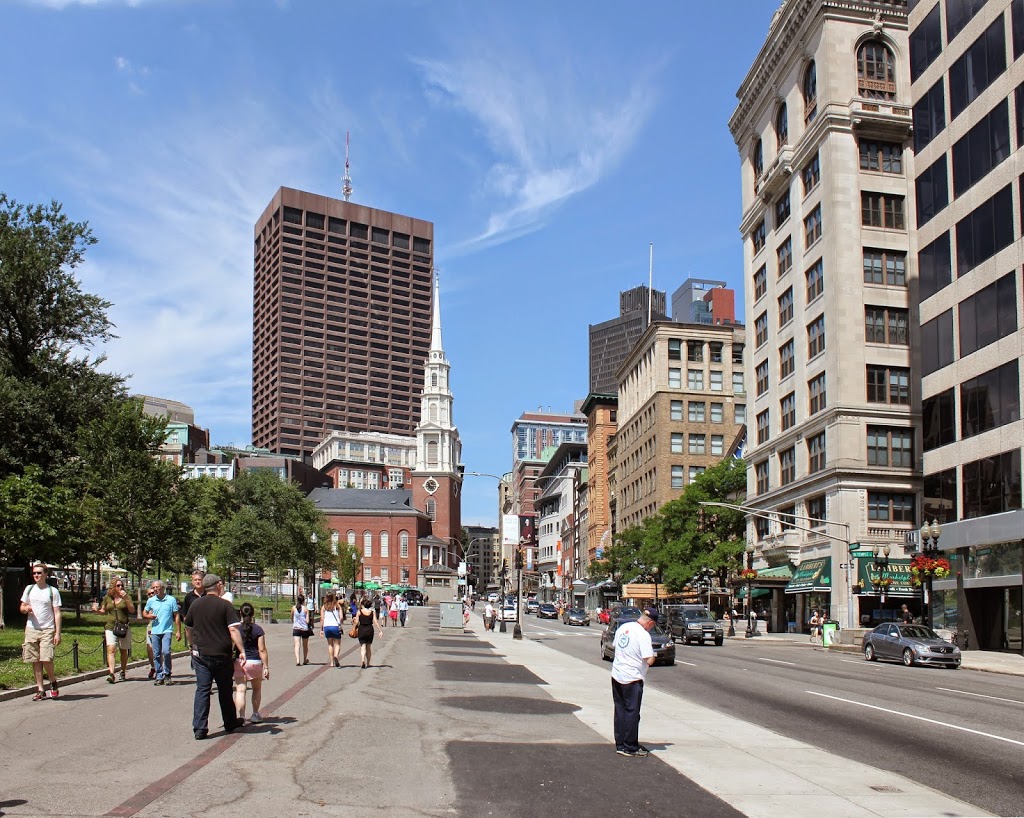The First Church at the southeast corner of Washington and Essex Streets in Salem, around 1865-1874. Image courtesy of the New York Public Library.
The building in 2017:
This location, at the southeast corner of Essex and Washington Streets, was the site of the First Church of Salem for nearly three centuries. The congregation worshipped in four successive buildings here, beginning with the completion of the first meeting house in 1634. The pastor at the time was Roger Williams, who would preach here for less than two years before his banishment and subsequent founding of Providence. This building was used until the 1670s, when it was replaced by a new meeting house that, in 1692, was the site of some of the examinations during the Salem Witch Trials.
The fourth church on this site was built in 1826, with a Federal-style design that was the work of noted Boston architects Solomon Willard and Peter Banner. The church itself was located on the second floor, while the ground floor was rented out to retail tenants on Essex Street side, providing the church with about $1,000 in revenue per year at the time of its completion. The first photo was taken around 40 years later, and shows the church in its original exterior appearance, with a granite first floor, brick upper section, and Ionic pilasters on the Essex Street facade.
However, around 1874 the exterior of the church was heavily remodeled to give it a High Victorian Gothic-style appearance. The granite first floor was rebuilt, creating a new storefront with large windows on the Essex Street side, and the Washington Street side was expanded to add towers on either side of the building, which were originally topped with pyramidal roofs. Also on the Essex Street side, the pilasters were removed and the rounded arches of the old windows were given pointed stone trim, matching the arches of the new third-floor windows on the addition.
When these renovations were completed, the new ground-floor tenant was Daniel Low & Company. Established in 1874, this store sold jewelry, watches, and silverware, and was a longtime fixture here in downtown Salem. The store would remain here until it finally closed in 1995, although the signs still hang above the first-floor windows in the present-day scene. In the meantime, the First Church continued to worship in the remodeled building until 1923, when the congregation merged with the North Church and relocated to its 1836 Gothic Revival-style church at 316 Essex Street.
Today, the building bears little resemblance to the church from the first photo, aside from the large pediment and the windows on the Essex Street side. However, aside from the missing tops of the towers, the exterior has remained well-preserved since the 1870s renovations. The former Daniel Low storefront is now the Rockafellas restaurant, and the building is now a contributing property in the Downtown Salem Historic District, which was added to the National Register of Historic Places in 1983.


